Rice racket: From the paddy fields of Bihar to the mandis of Punjab
Bihar grows about 8 million tonnes of paddy annually but barely procures about 20 per cent. Agents buy paddy from small farmers at a low price and send it off to mandis in Punjab to sell at a higher MSP. A Gaon Connection report.


A farmer in Bihar preparing the paddy to sell to middlemen. Pic: Umesh Kumar Ray
Muzaffarpur and Patna, Bihar
Anil Shah (name changed) is a farmer from Vaishali district who grows around 10 quintals (one tonne, or 1,000 kilogramme) of paddy annually. He is an aadhatiya (commission agent) too, who buys about 1,000 quintals (100 tonnes) of paddy at a lower price from other farmers in Bihar and earns a profit by selling it at a higher price over 1,300 kilometres away in a mandi in Punjab.
“We have contact with agents in Punjab who sell paddy sent from Bihar to the Punjab government at the MSP [minimum support price]. They take a commission per quintal,” Shah who has been in this business for six years now, informed Gaon Connection.
Shah buys the paddy from small and marginal farmers (owning less than five acre land) who are invariably in desperate need of money, to either meet household expenses or prepare for the next cropping. Once he has collected a sizable quantity of paddy, he contacts transporters from Punjab who bring other goods into Bihar. They take the paddy back on their return journey. “This way I save on one way transportation cost,” said Shah. He never accompanies the consignment of the paddy, he said, to avoid arrest in the event of a raid or if the paddy was seized.
There are hundreds of aadhatiyas like Shah, who buy paddy from farmers at a low price in Bihar and send it off to Punjab and Haryana where their contacts take commission and sell it at a good price. In the process, middlemen make money, while the farmers and the exchequer suffer losses.
A week back, Gaon Connection had reported how the Punjab Police had seized a large number of paddy-ladden trucks that were smuggling paddy allegedly from Bihar and Uttar Pradesh into the state to sell at the government notified minimum support price (MSP). The MSP of paddy (Rs 1,888 per quintal from Grade A paddy, and Rs 1868 per quintal for other paddy) is usually more than the rate in the open market (at present ranging from Rs 800-900 a quintal to Rs 1,200 a quintal), and states like Punjab lift the entire paddy on MSP, whereas this system is non-existent or extremely weak in Bihar.
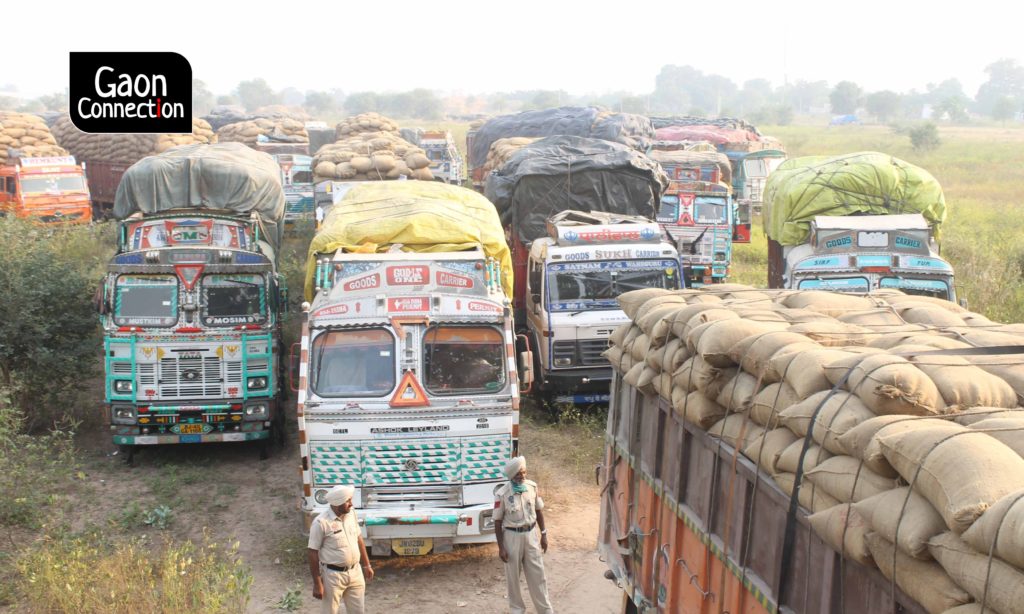
Interestingly, in a recent rapid survey across 53 districts in 16 states, Gaon Connection found that region wise, the highest proportion of farmers selling their produce at MSP was in the southern states of Kerala, Telangana, Andhra Pradesh (78 per cent) followed by the northwest region of Punjab, Haryana and Himachal Pradesh (75 per cent ); Maharashtra, Gujarat and Madhya Pradesh in the west was next (was 71 per cent) and then came the east-north east region of West Bengal, Assam, Odisha and Chhattisgarh (66 per cent).
Uttar Pradesh, Bihar and Uttarakhand in the north region had the lowest proportion of farmers selling at MSP (26 per cent). The results of the survey are released as the ‘The Rural Report 2: The Indian Farmer’s Perception of the New Agri Laws’ .
“Ninety per cent of farmers in Bihar do not get MSP. They have to sell their foodgrains to middlemen. The government should open and closely monitor mandis, and ensure that the farmers get a fair price,” Upendra Sharma, the head of the Vaishali Area Small Farmers Association told Gaon Connection.
The travelling paddy
There is a well established network that helps paddy travel from the fields of Bihar to the mandis of Punjab. Shah explained how it worked. “If I buy paddy at one thousand two hundred rupees a quintal from the farmer in Bihar, [the price may vary depending on the market price], I add two hundred and fifty rupees per quintal to it, and further sell to the agent,” he said.
Thereafter, he pays the transporter Rs 200,000 to carry 1,000 quintals of the paddy consignment to Punjab where his agent receives it. “The agent usually charges a commission of six to seven rupees for each quintal of paddy. After deducting the expenses of transport and commission, I get a net profit of 40 to 50 rupees per quintal. So, if I send 1,000 quintals of paddy to Punjab, I earn net forty to fifty thousand rupees,” explained Shah.
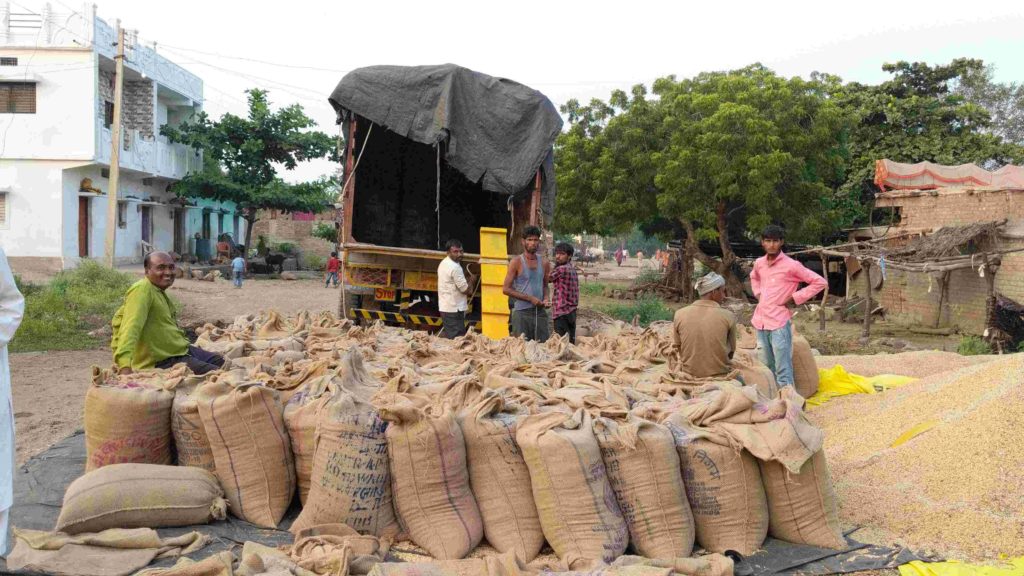
The agent in Punjab sells the paddy sent by Shah at a mandi at the MSP of Rs 1,868 per quintal, or to some other agency, and after deducting his commission, the agent transfers the remaining money to Shah’s account. There are hundreds of such aadhatiyas functioning from Bihar.
But, the Bihar government officials dismiss such allegations of paddy getting smuggled to Punjab to be sold at MSP. “While it may be possible that basmati paddy is being sent to Punjab or Haryana because of low prices here, regular paddy is not. If that had to be sent to Punjab, the transportation expenses would be very high,” Vikas Kumar Bariyar, special officer of the Cooperative Department of Bihar, told Gaon Connection. He dismissed the claims of paddy from Bihar being smuggled into Punjab, as baseless.
High production, low procurement
Gaon Connection has looked deeper into the paddy cultivation and procurement data of Bihar, which is one of the top states in the country for paddy production. Of the total 7.946 million hectare cultivated area in Bihar, 3.2 million hectares (over 40 per cent) are under rice cultivation. There are 104.32 lakh land holdings of which 82.9 per cent land holdings belong to marginal farmers, 9.6 per cent belong to small farmers and only 7.5 per cent farmers hold land above two hectares.
The state produces about eight million tonnes of paddy annually (West Bengal produces 16.05 million tonnes, Uttar Pradesh 15.54 million tonnes and Punjab 12.82 million tonnes per annum). Of this, the government procurement of paddy is very little. In the year 2019-2020, two million tonnes of paddy was procured, while the target was to procure three million tonnes. Similarly, in the year 2018-2019, only 1.42 million tonnes of paddy was procured.
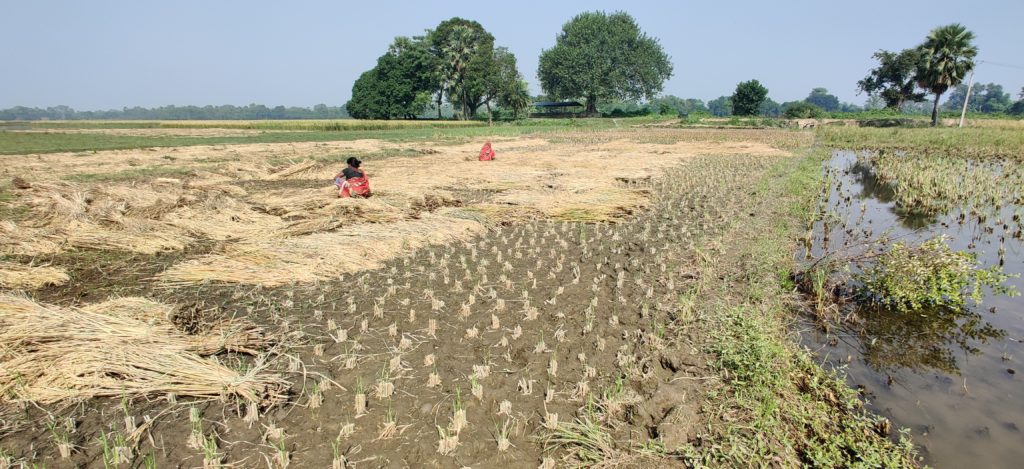
For sale of paddy, farmers in Bihar have to register themselves online with the co-operative department, but data reveals that there is poor procurement in the state through this government agency.
In the financial year 2019-2020, only 409,368 farmers submitted applications online for paddy procurement. For the current year’s (2020-21) procurement, only 21,879 farmers so far have submitted applications online, out of which 631 applications have been accepted (as of October 30).
Clearly, a large number of farmers in Bihar end up selling their paddy at considerable loss in the open market, below the MSP, some of which makes its way illegally to the mandis of Punjab.
For instance, Arvind Kumar is a farmer of Baniya village in Muzaffarpur district of Bihar. He has been farming for the last three decades, but has been able to sell foodgrains to the government only twice or thrice till date. “My experience of selling to the government has been very bad,” he told Gaon Connection.
He complained about how the government dragged its feet when it came to procurement and payments. “Our livelihood depends on farming. We have to pay cash to the labourers working in the fields. In such a situation, if the government delays procurement and payment, how will we arrange money for wages and sowing of the next crop,” asked Arvind Kumar who cultivates paddy, wheat and maize in his 3.2 hectares of land.
Last year, Arvind Kumar could not sell even one kg of paddy through the procurement system. He had to sell 10 quintals of paddy to the local baniya at the rate of Rs 1,100 per quintal. “I could not earn a single paisa profit from paddy. Instead, I had to bear the loss of 150-200 rupees per quintal because production cost stands at 1,300 rupees per quintal,” he lamented.
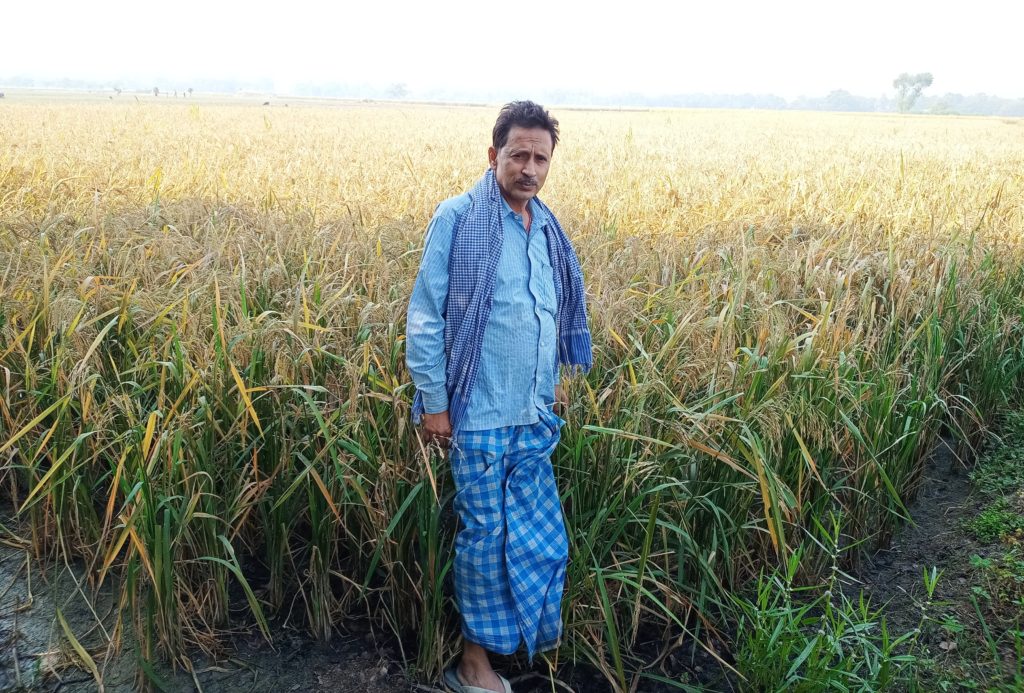
Fourteen years ago, in 2006, Bihar did away with the mandi system by abolishing the APMC (Agricultural Produce Market Committee) Act with the aim of liberating the farmers, but for many like Kumar, it has left them at the mercy of middlemen who are extracting the profit that should in all fairness belong to the farmers.
Problem with PACS
In Bihar, Primary Agricultural Credit Society, commonly known as PACS, is a panchayat and village level unit that extends rural credit to farmers and also provides marketing assistance to help them sell their product at good price. There are 8,463 PACS in Bihar, which are given the target of government procurement of foodgrains based on how much area is sown under the jurisdiction of a Society. Apart from PACS there are 500 vyapar mandals that also procure paddy.
“Last year I tried to sell paddy through PACS but eventually had to sell it through middlemen,” Lalan Rai, a 38-year-old farmer with about 1.6 hectares of cultivable land in Baniya village in Muzaffarpur district, told Gaon Connection. Rai also said that selling through PACS meant not getting paid on time. “Also, it is easier for me to sell my grain to middlemen as the procurement center is nearly 10 kilometers away,” he said.
When contacted, people operating the PACS told Gaon Connection that they too worked under considerable constraints. On condition of anonymity, PACS operators said that they first bought the paddy from the farmers by taking a loan at 11 per cent interest. Then they had to process the grain into rice before giving it to the government. Only after it is sold to the government that they get their money, which takes time. They also pointed out that the loan amount they received was far less than the purchase target given by the government.
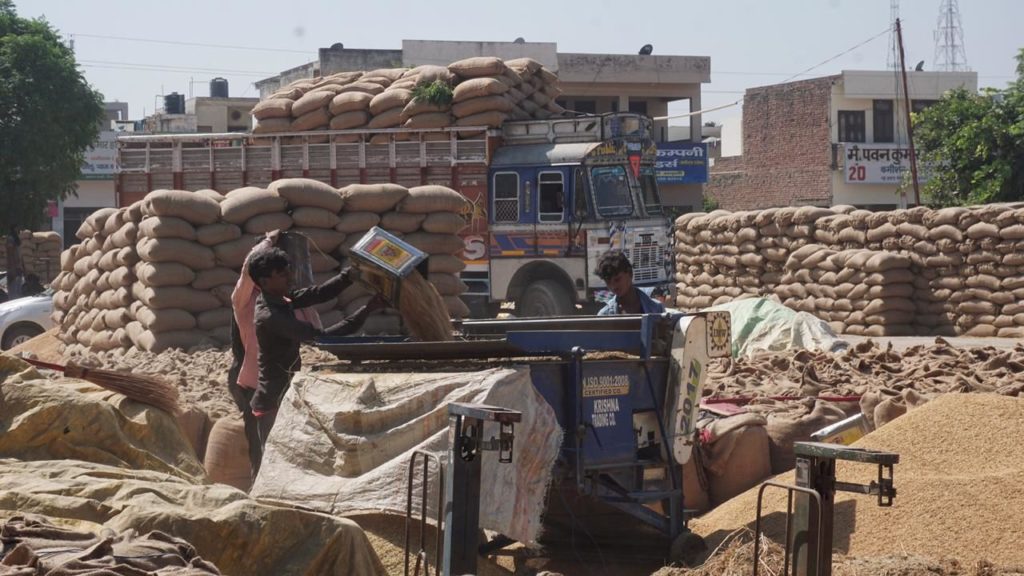
“We get loan money of only 25 per cent of the purchase target. The co-operative bank gives us the loan, which comes into the PACS bank accounts. After purchasing paddy from farmers, we send money to their accounts. It takes between two to three weeks,” Sanjay Kumar, who operates PACS in Mokama, in Patna district, explained to Gaon Connection.
“Most of the time it happens that the PACS run out of money. We take the grain from the farmers, but cannot not pay them immediately. The process of getting the money from the government is also very complicated and time consuming,” he pointed out. Sanjay Kumar’s PACS has a target of purchasing approximately 2,000 quintals of paddy, (depending on the area of paddy cultivated in a particular season under the jurisdiction of the PACS), but he rarely buys more than 1,000 quintals.
Another PACS operator based in Patna Rural, on the condition of anonymity, said, “If we buy a quintal of paddy (100 kgs), the government gives us the price of only 66 kilograms (the government assumes there is 34 kgs husks in 100 kgs of paddy), but the money is not transferred on time, and the interest amount on our loan keeps rising,” he said.
Perhaps this is the reason why PACS are reluctant in buying more paddy from the farmers.
Already the farmers are complaining against procurement delay this season. “Paddy procurement has not started so far. I have harvested paddy and in fifteen days I will have to start the wheat sowing process. I need the money now, but procurement will start after 15 November,” said Arvind Kumar. “If I want to sell to the government through the PACS, I will have to wait and that will delay my sowing, as I need money now” he added.
Gaon Connection contacted Bihar agriculture minister Prem Kumar, and Uday Pratap Singh, chief general manager (procurement), food and supply department but they did not respond to the repeated phone calls.
Meanwhile, somewhere in Bihar, another truck is being loaded with paddy and seen off to Punjab where it will be sold at a mandi at MSP. Another middleman will rejoice at the profit he made. And another farmer will go back to sowing his next crop, despairing and resigned to his fate.

